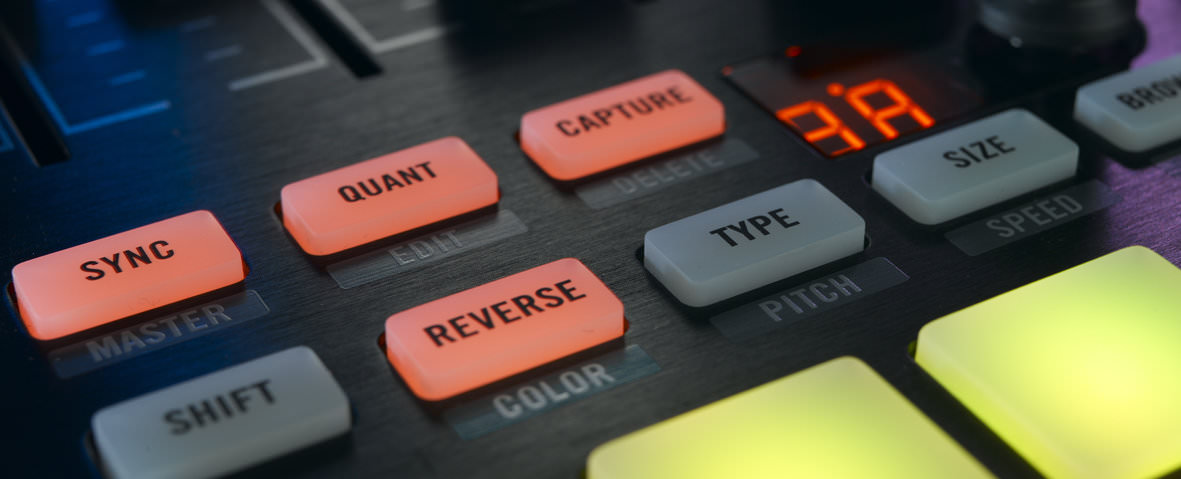
The value is increased by one for each button pressed, and decreased by one for each button released. If no button is pressed, the modifier will have the value 0. In the next example, a modifier monitors how many of our four buttons are currently held. A solution to this however, is available in the form of a “modifier”. For our four Beatmasher 2 keys, for example, the values 0.3, 0.5, 0.8 and 0.9 are recommended.īefore you can unleash the power of these four buttons, remember: If several buttons are pressed at the same time, the effect may be turned off as soon as a button is released – even if at least one is still held. Then, we’ll have to adjust the effect parameter for the three new Knob 1/2/3 commands in the Options button by changing “Set to Value” individually. The easiest way to do this is to copy all our existing commands three times and just assign new buttons to each copy. Now that we have mapped the first button with an effect parameter of 0.8, we can now map three more buttons, each using a different effect parameter (Knob 1). Setting the “Interaction Mode” to “Direct” along with “Set to Value” to “Group” sets FX Unit 1 directly to “Group” mode when the button is pressed.Īnd now, our first mapped key should work perfectly! This first command switches the FX Unit of our choice to either “Single” (one effect per unit) or “Group” (three effects per unit). We will always assign the first FX Unit in this example. Then set the “Assignment” to “FX Unit 1”. Since we’re assigning all commands to one button, in the Mapping Details section, set the “Type of Controller” to “Button” for all the commands below. Now we’re ready to add individual commands one by one. Different commands can be assigned to your MIDI controller’s buttons by activating the “Learn” button and then pressing the desired button on the controller to select it. All the essential mapping commands we need can be accessed here by pressing the “Add In…” button and selecting the category “FX Unit”. We can then configure our MIDI controller via the In and Out ports. Once in Controller Manager, a new MIDI mapping can be created by pressing the “Add…” button, and selecting “Generic MIDI”.
TRAKTOR F1 FX PRO
In order to do this, we’ll have to map some commands in the Controller Manager which is located in TRAKTOR PRO 2’s settings. Of course, this mapping should always work, regardless of which effects and settings were previously used. The effect will remain triggered as long as the button is pressed.

To trigger this effect with specific settings, only one button is needed.
TRAKTOR F1 FX HOW TO
In this example, you’ll learn how to create mapping commands that control the Beatmasher 2 effect. Once you’ve understood the important principles, you can start mapping your own custom effects to your MIDI controller.įirst example – one-touch beatmasher 2 effect In this tutorial will learn you how to create mappings using specific examples. The best part is, creating the required commands in the Controller Manager is a one-time effort, which means that accessing your personal effects arsenal during a performance will be uncomplicated ever-afterwards.

Having several buttons close to each other with different effects assigned using mappings results in some incredible possibilities, for instance, multiple effects can be instantly triggered alternately, or even simultaneously, depending on button pressure. The goal? Learn how to select, configure, and trigger your effects with just one touch on the MIDI controller of your choice. That’s why Native Instruments will shed some light on how this can be automated by mapping commands using TRAKTOR’s Controller Manager in this tutorial. Anyone who has ever DJ’ed knows it can be difficult to call up multiple effects with specific settings when playing live. Every DJ wants to make their sets stand out with their own signature effects, and TRAKTOR PRO 2 offers a world of possibilities for this.


 0 kommentar(er)
0 kommentar(er)
